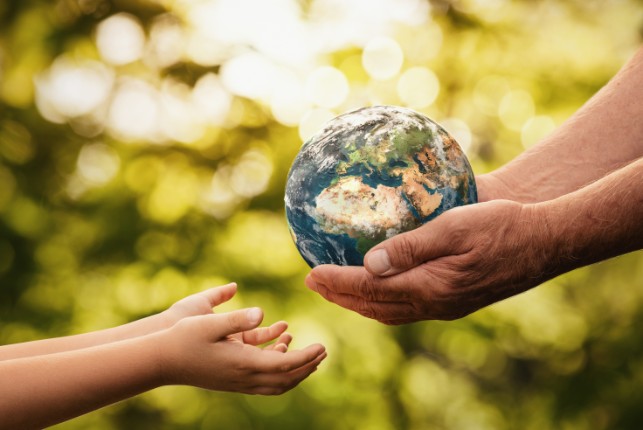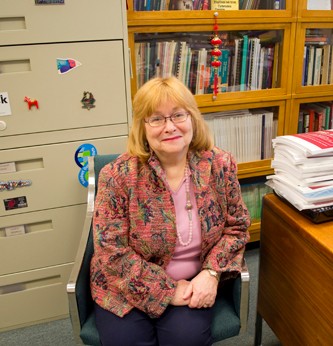How will the world's COVID-19 response impact the environment?
Three Lehigh professors―Benjamin Felzer, Sharon M. Friedman and Dork Sahagian―offer their insights below.
A Q&A with experts from Lehigh’s Department of Earth and Environmental Sciences and the Environmental Studies Program

Photo: iStock-Nastco
How will the world's COVID-19 response impact the environment?
Three Lehigh professors―Benjamin Felzer, Sharon M. Friedman and Dork Sahagian―offer their insights below.

Benjamin Felzer, associate professor in the Earth and Environmental Sciences
Felzer, whose research focuses on global climate and terrestrial ecosystem models, is an associate professor in the Earth and Environmental Sciences. Friedman is professor and director of the Science and Environmental Writing Program in the Department of Journalism and Communication and director of the Environmental Studies Program and associate director of the Environmental Initiative. Her research focuses on risk communication issues and on how scientific, environmental and health issues are communicated to the public. Sahagian, a professor of Earth & Environmental Sciences, conducts research in paleoclimatology, volcanology, stratigraphy, geodynamics and tectonics, global hydrology, sea level, the environmental impacts of human activities, and science education.
Q. The movement of people around the world has changed dramatically over the last few months. Can you describe what impact this has had on the environment?

Sharon M. Friedman, director of the Environmental Studies Program and associate director of the Environmental Initiative
A. Felzer: Reduced air travel, as well as transportation in general and other industrial activity, has caused a reduction in greenhouse gases (Carbon Dioxide - CO2, Methane - CH4) as well as pollutant gases like Carbon Monoxide - CO (mainly from transportation) and Nitrogen Dioxide - NO2. According to the BBC, CO2 levels over NYC have dropped 5-10% compared to last year. Over a four-week period, CO2 emissions in China dropped by 25%, totaling 6% of global emissions, due to reductions in use of burning of coal and oil. But this is typical to the economic slowdown that occurs annually after the Chinese New Year, so they have already rebounded to normal levels since the return to normal economic activity.

Dork Sahagian, a professor of Earth & Environmental Sciences
Q. What behavior change is likely making the greatest impact? After the coronavirus crisis passes, what can individuals do, short of self-isolating, to continue it?
A. Felzer: Reduced transportation and reduced economic activity (e.g. production) are both having a large impact. Some good trends that may outlive the immediate pandemic that would help reduce carbon emissions are more teleconferencing to reduce unnecessary business travel, reduced international trade due to the need to produce more local goods, and more remote working, as businesses find it is unnecessary to be on site and people push for the freedom to work from home.
Q. Do you think the changes in emissions we are seeing during this crisis will change the way people think about our collective impact on the environment?
A. Felzer: Personally, no, but I hope so. However, I think as people are getting outdoors more, they are recognizing that the air and water quality are improving. Anecdotally, some are also observing more wildlife. Clearly these observations should make the case that humans can have a profound effect on their environment. Climate change resulting from carbon emissions is more long term, but the direct effects of pollutants are short term enough for people to visualize and understand. China, for example, has seen 30% reductions in NO2, resulting in observably clearer skies. Note that NO2 is an important precursor for ozone and also has its own health impacts. PM2.5 would also be significantly lower with fewer cars and trucks on the road, especially diesel engines.
A. Friedman: Scientists are seeing a connection between air pollution damage from fine particulate matter (PM2.5) and other pollutants to lung problems that make people more susceptible to COVID-19. This connection between lung damage from air pollution and COVID-19 is strong as shown by the high death rates from COVID-19 among people who live near Louisiana’s “Cancer Alley.” Allegheny County in Pennsylvania, which includes Pittsburgh, is among the 310 U.S. counties with both the highest relative density of major air pollution sources and highest relative rates of COVID-19 deaths, according to a report from the NRDC. In addition, a recent Harvard University study found that Americans with COVID-19 who live in places with high levels of air pollution are more likely to die from the disease than people who live in less polluted places. With strong data supporting this important health connection, perhaps state governments and citizens will be concerned enough to try to reduce air pollution in these and other areas.
Q. We now know that collective behavior change is possible when the threat to life is made real and imminent. What will it take for us to see climate change as an existential threat and respond with similar urgency?
A. Felzer: Well, people should be able to now see that it is necessary to prepare for what is to come (i.e. the exponential growth of COVID-19 or climate change), not just for current conditions. Of course, the problem in the timescale is quite different―days and weeks vs. years to decades. The current crisis shows that waiting for the impacts to hit can be disastrous. Both the current pandemic and climate change are foreseen events that can be addressed―it’s just a matter of political will. But it is difficult to build political will to prevent future disasters, rather than reacting to what is happening in the moment.
A. Sahagian: Here is the more chilling aspect of the situation. There has been some question regarding modern society’s role in causing the pandemic in the first place. The argument is based on the wildlife origin of this virus (and most others). Land use involves deforestation and conversion of other land cover types to mostly agriculture, leading to about a quarter of the total cumulative greenhouse gas emissions to date. (Now, however, 21st century fossil fuel emissions and some forest regrowth have increased to the point that land use is only one tenth of annual emissions equivalent.) As we decrease the area of animal habitat, especially in the tropics, forcing more animals into populated areas, it has been suggested that human-wildlife contact is increased, promoting virus transfer, as was apparent with Ebola. So the same thing (land use) that contributes to climate change, also exacerbates viral transfer. This is a doubly positive feedback in that human population explosion leads to both increased land use for agriculture and greater population density and thus transmission.

Ashley Kreitz ’15 has raised nearly $10,000 and recruited fellow alumni to help restore damaged homes in North Carolina.

Spearheaded by the McDermott lab at Lehigh, the research demonstrates there are more hydrothermal vents in the deep-sea than previously thought and underscores a need for bathymetric mapping to locate them.

The air sensors allow local residents and scientists to collect hyper-local air quality data and inform the public of their exposure to poor air quality.